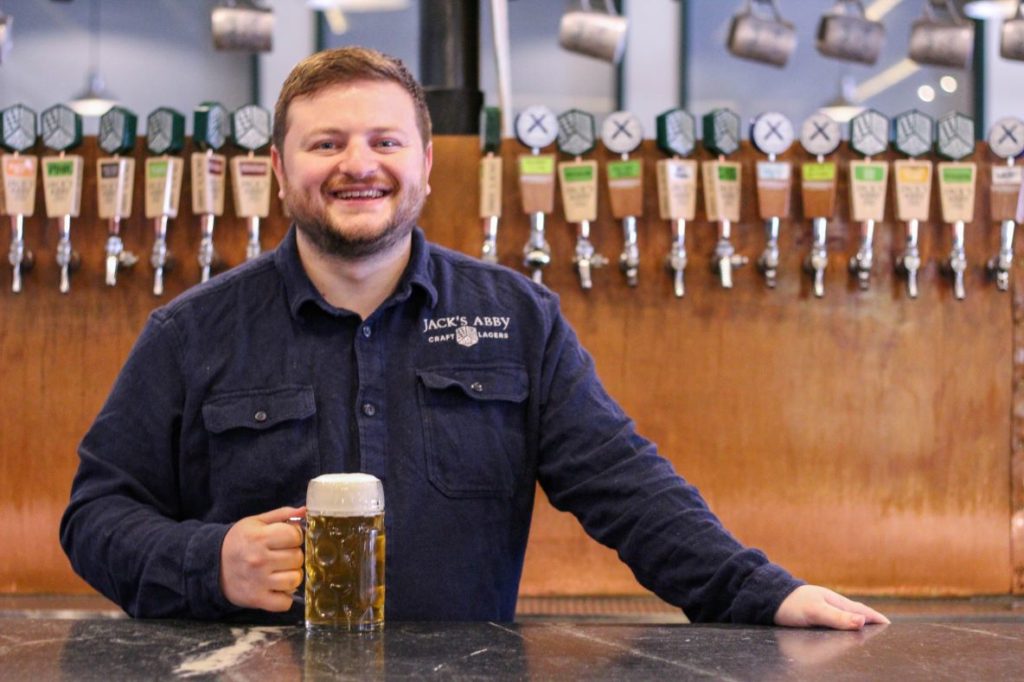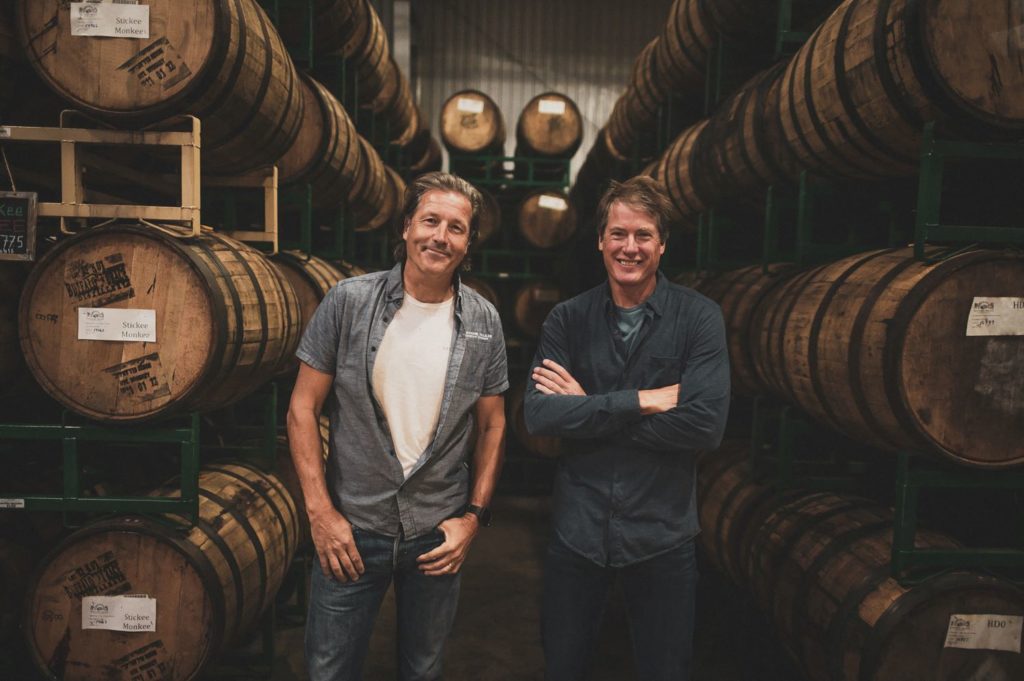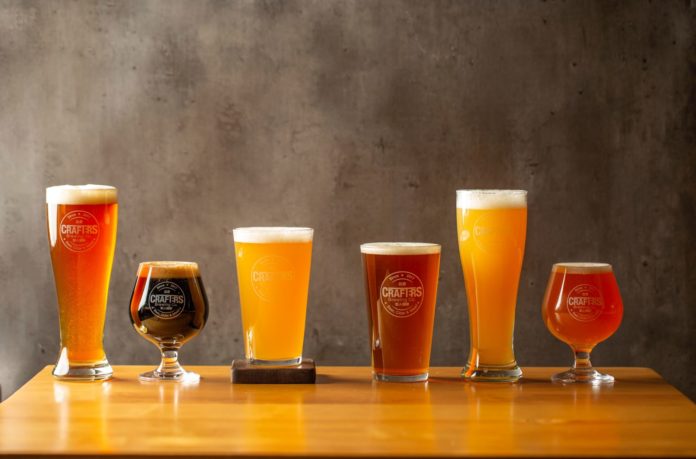Covid-19 significantly upended the craft beer industry. Before the pandemic, one of the top craft beer trends was the rise of taprooms as a primary source of profits. Suddenly, the industry did not seem so overcrowded. The escalating number of breweries became less worrisome, because every local brewery could operate as a neighborhood bar, relying on taproom sales rather than fighting for limited space on retail shelves.
Then Covid arrived. National lockdowns included taprooms. What had been the lifeblood for so much of the industry — and a vital source of customer feedback on new beers, driving innovation — abruptly disappeared. Staff layoffs began. The outlook grew grim. Breweries scrambled for new business models.
Ecommerce, curbside pickup and direct-to-consumer delivery all proved vital during the pandemic. As did increased canning for off-premise sales, both through the brewery and retail.
The industry adapted quickly, and impressively.
But the health crisis still did significant damage. Craft beer consumption shrunk by 8.6% in 2020, according to Beverage Information Group’s 2021 Beer Handbook. And it’s unlikely that 2021 saw significant improvement.
“Craft beer was certainly soft in 2021 vs. 2020, due to large comps from pantry-loading behavior and competition from RTDs, seltzer and cannabis,” says Founders Brewing Co. Director of Market Development Chad Atherton. “Supply chain and cost of goods affected profitability, and logistics have presented significant challenges.”

So what happens next? The industry will continue to evolve with Covid.
Taprooms have come back online, albeit in limited form. Meanwhile, new threats have emerged.
The aluminum shortage squeezed canning lines. Staffing declines crimped businesses. Inflation increased the cost of everything. Perhaps most imposing is the spirits category, with the modern whiskey boom, and the meteoric rise of ready-to-drink cocktails.
This industry has experienced a tumultuous past few years, defined by rapid adaptation. The future appears similarly challenging, but with lots of rewards for breweries that navigate correctly.
With all that in mind, here are 10 craft beer trends we see for 2022.
Brand Building Remains Critical
This dominant trend from recent years has only grown in importance since the pandemic. Breweries across the country have cut down product lines in order to put considerably more marketing efforts behind a small core set of brands. Building these flagship products remains key in 2022 for standing out among the crowd — especially as more consumers embrace ecommerce.
“Brand building is the whole game, now,” says Sam Hendler, co-founder of Jack’s Abby Craft Lagers. “When consumers shop online, they only see an alphabetical list of beer inventory on retailer websites. There’s nobody there to sell consumers the next new thing in a digital environment like that.”
“If your brand is not top of mind for the consumer, it is what it is online,” he adds. “You need someone to type in your brand into a search engine. Brand building has become the number-one weapon with the closures and limitations of taprooms.”
Without pre-pandemic levels of customer experimentation happening in taprooms, brand building has also become an important way to spur consumer trial.
“These brands have name recognition,” says Bill Covaleski, co-founder of Victory Brewing. “When you have consumers who already enjoy the original version, that customer is going to be intrigued by the same brand name on a variant.”

IPAs Remain King, But Cracks Emerge
There is no doubt what beer style is most popular in America. IPAs, in their manifold forms, are still out in front.
“IPAs are here to stay,” says Atherton of Founders. “Hazy and Imperial styles are leading the charge, and creating a lot of room for innovation. Hop profiles have become a prominent attribute that consumers gravitate towards, and can also add significant nuance to flavor profiles.”
However, the IPA craze of recent years has perhaps cooled off just a little bit.
“IPAs make up more than 40% of the total craft beer industry, and until recently were growing at a rapid clip. That growth has largely stalled out recently, with most remaining growth in the Hazy IPA and the Imperial/Double IPA styles,” observes Brooklyn Brewery CEO Eric Ottaway. “While I don’t think the consumer love affair with hops is going to disappear any time soon, there does seem to be a bit of a shift to lighter drinking styles like pale ales or pilsners.”
That said, there’s no end in sight for consumers’ overall embrace of IPAs.
“What’s the future of IPAs? That’s like asking, ‘What’s the future of red wine?’ Hop-forward beer is thousands of years old . . . there’s an enduring future for IPA,” says David Walker, co-founder of Firestone Walker Brewing Co.
Agreeing with him is Dogfish Head Founder and CEO Sam Calagione.
“The IPA category will continue to grow faster than all other styles,” he says, “and it will continue to fragment into sub styles, like Hazy and Imperial, which I think will continue to be the fastest growing sub styles next year.”

Low-cal/No-cal Beers
The “healthier for you” drinking trend has extended into craft beer. More breweries now offer low- or no-alc options.
“We’re continuing to develop new beers in the easy-to-drink, lower-alc area,” says Sean Lawson, CEO and founder of Lawson’s Finest Liquids, in Vermont. “We have a new low-cal pale ale. We’ve never even had a pale ale in our lineup. It’s 5% ABV, made with all Vermont ingredients.”
Helping fuel this trend is a big leap forward in the quality and variety of flavors in nonalcoholic beer. Partake Brewing is a craft brewer out of Canada that specializes in this style, with a full array of craft offerings: IPA, DIPA, Pale Ale, Blonde, Stout, Gose, Red (AKA: an amber ale) and more.
“When we started, we began with two constraints,” recalls Partake Founder and CEO Ted Fleming. “We had to get our beers below that 0.5% ABV threshold to be considered nonalcoholic, and we wanted to get correct taste profiles outside of lagers, as before all of this, most nonalcoholic beers were lagers.”
“We dug into the category and helped make it a lot better,” he adds. “The varieties you see now in nonalcoholic beer are reminiscent of where the craft beer category was 10 to 15 years ago. There’s more innovation and imagination in this category right now than there has ever been before.”
As more consumers enter this category — either through experimentation or healthier diets, or both — look for product innovation to continue. Brooklyn Brewery recently released what they call the first nationally available nonalcoholic beer variety pack.
“We’ve seen this culture of trial and experimentation around all beverage consumers but especially those who are interested in the low/no alcohol space,” says Samantha Itzkovitz, VP of marketing at Brooklyn Brewery.
The Fight for Ecommerce and DTC
Ecommerce has become crucial for breweries. The ability to sell beer online — whether for onsite or curbside pickup, or shipping directly to consumers (DTC) — has allowed producers to move beer even during the worst parts of the pandemic. This required legislative changes for the benefit of the industry. To their credit, state politicians across the country quickly passed these new laws to grant the lifeline of craft beer DTC.
But as vaccines roll out and new Covid variants (hopefully) lessen in severity, what becomes of these laws? After all, politicians proposed them as temporary — only necessary due to the severity of the pandemic. With the world reopening, and many retailers and distributors opposing DTC, will these laws survive?
Expect craft beer to put up a fight.
“There will be a huge push for DTC,” says Hendler of Jack’s Abby. “Those battles have already begun in state houses nationwide. It’s going to be different, state by state. It’ll be ugly. Hopefully we’ll be adding flexibility through DTC, but it’s going to be choppy depending on the state.”
Agreeing with him is Covaleski of Victory.
“Ecommerce is a massive opportunity, but the middle tier has legally established privileges,” he says. “Ecommerce is still a long game, to say the least. In the near term, consumers appreciate the convenience and assurance of DTC. We like Drizly and Gopuff, which both operate legally within the three-tier system.”
However, the economics of craft beer ecommerce do not necessarily translate on a national level.
“Beer is heavy, so that the shipping cost-versus-value equation is pretty difficult,” says Ottaway of Brooklyn. “So the idea of shipping beer all across the country from a central warehouse somewhere for the most part doesn’t work, either legally or financially.”
“That being said, various home-delivery models have developed that are connecting local retailers with consumers,” he adds. “Those models are having success and really benefited from everyone being at home during Covid.”

Taprooms Remain Important, Limited
As we learned to live with Covid-19, and standardized safety measures, more people returned to taprooms.
While not matching the boom times before 2020, these on-premise sales do help the bottom line, while nurturing new products. Producers can pour their latest innovations fresh, and judge consumer response before brewing bigger batches and/or scaling for retail.
“Trial happens on-premise,” says Covaleski. “Off-premise volume happens thanks to trial at on-premise. Without on-premise, it’s a challenge for all beverage businesses.”
For this reason, the industry needs consumers to return in strong numbers at all on-premise channels.
“Pubs and restaurants are the ‘live theatre’ of our world; it’s where we tell our stories and showcase our beers,” says Walker of Firestone Walker. “Without them we are somewhat weakened. We need them back strong and healthy.”
On-premise is just as crucial now as before the pandemic.
“Taprooms remain critical to the survival of breweries,” says Hendler of Jack’s Abby. “On-premise is coming back. I don’t see it coming back to 2019 levels, but I do think it largely comes back.”
And what does that look like? After all, consumers have spent years now shifting their buying habits online.
“It’s changed the experience of dining out,” says Hendler. “It puts a challenge on us. Hospitality is something that’s real. Customers still want impactful, positive experiences. They don’t want the beer hall to be purely interactions between people and their phones.”
Inflation and Shortages
Among the most daunting challenges for craft beer, and global business in general, is lingering inflation and product/packaging shortages. Both follow the economic fallout of Covid-19 and our shaky financial rebound. Packaging materials of all kinds — especially cans, labels and glass — remain in short supply while their prices spike.
“Disruption from inflation and shortages really is the big story right now,” says Lawson of Lawson’s Finest Liquids. “There’s really higher cost pressure on everything right now, from raw ingredients to packaging to the cost of labor.”
Complicating matters, one of the leading can producers in America, Ball Corporation, has significantly changed its prices and procedures. Costs of cans rose greatly beginning Jan. 1, while warehousing and shipping services narrowed in a way that may squeeze out smaller breweries.
“It looks like they’re getting out of working with craft breweries not doing large volumes,” Lawson suggests. “I think smaller breweries may have to move to more-expensive forms of packaging, like shrink-sleeve cans. But those already cost three times more than printed cans from Ball. And who knows what the pricing on shrink-sleeve will look like moving forward. That could go up, too.”
It’s hard to imagine these price increases not passing onto consumers. Especially in a time of mass inflation.
“We’re getting letters of annual price adjustments, and pricing will be a major issue in 2022,” says Hendler of Jack’s Abby. “We have items going up 30 to 50%. These are not marginal pricing issues. A lot of this is tied to the current shipping rates. So if that eases, then prices could go down. But the reality is that there’s no end in sight.”
Another major shortage in 2022 is staffing. Unfortunately, this, too, shows little sign of correcting in the near future.
“Restaffing has not been easy,” says Hendler. Jack’s Abby operates a 7,000-square-foot beer hall and 6,000-square-foot beer garden in Framingham, MA. “The employment market was tight pre-Covid, and then there was a colossal event where hospitality employees were laid off or furloughed. Then those people were hired by other industries not as affected by Covid. On-premise couldn’t hire until the vaccines began, and that was spring 2021. Every other industry got a nine-month start on hiring.”

Lagers: Slow But Steady Growth
The breakout of craft lagers has long been predicted. While a number of consumers have consistently loved this style, it has always taken a back seat to IPAs. And not for nothing, IPAs are generally more profitable and easier to brew than lagers.
But as modern drinkers continue expanding their palates, lagers have gained momentum. Their popularity has steadily continued in recent years. There’s no doubt they remain relevant in 2022. Many breweries now offer classic German and Eastern European styles like helles and pilsners, which can act as a gateway into craft for drinkers of macro beer.
“Lagers will continue to grow,” says Hendler of Jack’s Abby, which only produces lagers, (their sister brewery, Springdale, makes ales.) “Beer drinkers like drinking golden lager. There’s still more golden lager sold than any other style, and that will always be so.”
Sours: Still a Profitable Niche
Take a time machine back before Covid-19, and nearly every brewery at beer fests in 2019/early 2020 poured two IPAs and a sour. While that second IPA would now likely be a lager, the appeal of sours has only risen in the past few years.
“We have one of our bigger bets in 2023 on a sour expansion of our Golden Monkey line,” says Covaleski of Victory. “It will have the standard 9.5% ABV of our Golden Monkey line, and will be driven by a raspberry flavor. It’s an exciting launch for us.”
Sours typically have light and fruity flavors similar to wine or cocktails, which helps expand craft beer’s demo. These beers have generated sales nationwide.
“Fruited sours have been popular recently,” says Atherton of Founders. “We are also seeing a shift back to high-ABV beers, especially those that have added flavor components such as fruit, coffee, chocolate, spices and barrel-aged.”
Sours also fit into the low-cal, less-abv movement in craft beer. With appeal across multiple demos and trends, this category is well-positioned for 2022.
Diversity and Inclusion
Mirroring the alcohol industry and our country overall, craft beer has recently considered its own ranks and consumer base, and recognized the need for improved diversity and inclusion. Progress has followed.

“The Black Lives Matter movement was a wakeup call for craft brewers to the need to do more to actively promote diversity and inclusiveness in what has been an overwhelmingly white male-dominated industry,” says Ottaway. “While we at Brooklyn Brewery have always been more diverse than many, still we were motivated to do more and we launched two new initiatives. The first was started by our Brewmaster, Garrett Oliver. He launched the Michael James Jackson Foundation for Brewing & Distilling to support technical educational and career advancement for BIPOC people.”
“The second big initiative that had already been in the works for a while was through our partnership with the Stonewall Inn,” he adds. “Together we launched the Create Space program to support grassroots activists fighting for LGBTQ+ rights around the world. The Create Space program has been launched globally through many of our international partners as well.”
Black is Beautiful is a collaborative effort in the brewing community to bring awareness to injustices that people of color face daily.
In Connecticut, Jamal Robinson, director of sales at New England Brewing Co., working with Sacred Heart University, helped launch NEBCO African American Brewers Scholarship and The Connecticut Brewers Guild African American Brewing Scholarship. Both aim to bring more people of color into the industry.
“Craft beer represents a huge part of American culture, and billions of dollars in economic impact, that only a very small percentage of people of color get to benefit from,” Robinson says. “This scholarship provides an equitable opportunity to diversify who is brewing and drinking craft beer. It also diversifies what the space looks and feels like as a whole. This creates an industry that is more comfortable and welcoming to everyone, while creating more drinkers, more qualified employees and, best of all, an even bigger economic and cultural impact that benefits more people.”
It’s an important cause with much further to go.
“Craft beer traditionally has a diversity and inclusion problem,” says Nico Freccia, co-founder and COO of 21st Amendment Brewery. “Women and minorities are highly under-represented in both craft brewery ownership, production, and as a targeted consumer. While there is more and more attention on this every day, and things are improving, craft beer has a long way to go to appeal to more drinkers and to be more inclusive in its workforce.”

The Fight Against RTDs
Are RTDs an existential threat to brewing? Certainly they pose a problem. Many stores stock RTDs at or near the craft beer section. Worse, the pandemic-fueled spike in RTDs has these products eating into craft beer space.
Do RTDs even belong in this section? Or should these premade drinks find room elsewhere?
The answer to this question, defining this grey area, will significant impact the craft beer industry. After all, RTD cocktails grew 35.1% in volume in 2020, according to IWSR Market Analysis, which also predicts that RTDs will reach 22% market share of total alcohol in the U.S. by 2025.
“Seltzers and RTD’s are here to stay,” says Freccia. “The alcohol beverage consumer wants more choice, and wants different beverages for different occasions. Craft brewers will need to pivot and be more nimble about bringing products to market that are in the beer-adjacent space. And whoever stumbles upon the next big thing will catch lightning in a bottle.”
Other brewers concur.
“RTDs are very important,” says Calagione of Dogfish Head. “The beyond-beer space is growing faster than traditional beer, and craft breweries have the creative recipe development experience across all kinds of grains, fruits, spices and fermentable sugar sources to be impactful in these fast growing sectors.”

What’s Next for Craft Beer in 2022?
Despite these challenges, craft beer remains a resilient, dynamic industry.
“The future is bright,” says Walker of Firestone Walker. “Small brewers have been the most enduring brewing model in the history of brewing. It’s been like this for centuries: great beer, locally made and freshly consumed in the community it was brewed. Hard to beat.”
Sharing his sentiment is Ottaway of Brooklyn.
“The days of big double-digit growth every year are gone, but that doesn’t mean craft beer won’t continue to be an important part of the beer conversation,” he says. “In many ways, what craft brewers brought to the table 35-plus years ago, which was the reintroduction of flavor into the beer conversation, is what will continue to drive the segment. It’s just that those flavors will range further and farther than ever before, and they will cross all kinds of boundaries both within and outside of traditional alcohol.”
“It’s a more challenging environment than in a long time,” Ottaway adds, “but it’s also more exciting.”
Craft beer may have suffered during the pandemic, but should be in good shape for recovery as Covid-19 recedes in earnest.
“Craft beer has had a lot of challenges during Covid: Loss of craft volume, changing consumer habits, and increased competition in the alcohol beverage space,” says Freccia of 21st Amendment Brewery. “But retailers are already talking about how they’re looking to devote more shelf space to craft beer in 2022. And as more and more on-premise outlets open up post-pandemic, we should see craft make a strong rebound.”
Photo by Jon Parry on Unsplash.
Kyle Swartz is editor of Beverage Dynamics magazine. Reach him at kswartz@epgmediallc.com or on Twitter @kswartzz. Read his recent pieces, 12 Beer and Beverage Products to Watch from NBWA 2021 and What if the Future of Beer . . . Isn’t Beer?.




